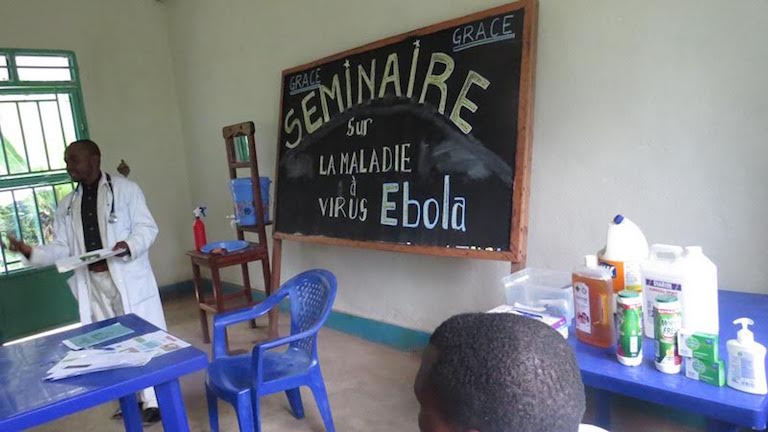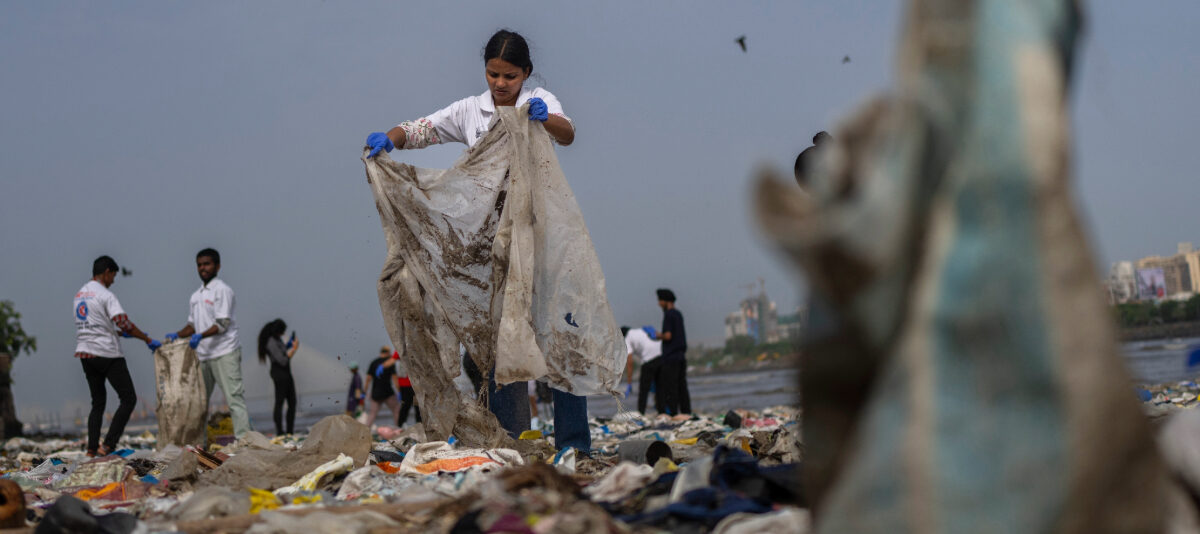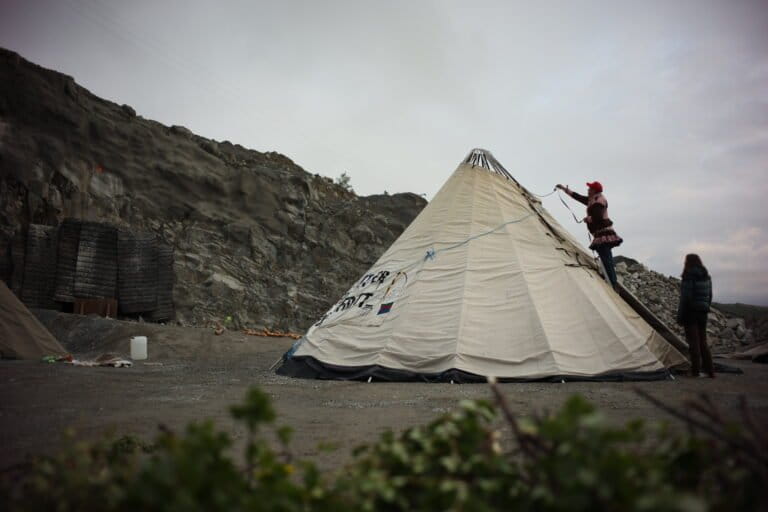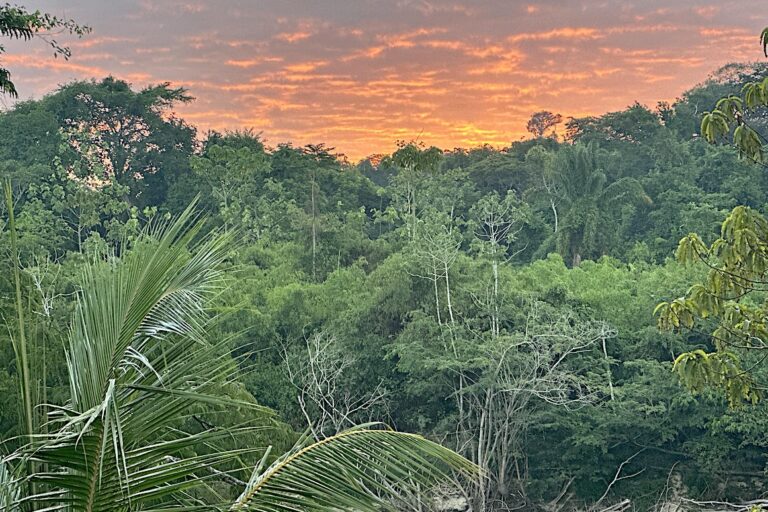- The Democratic Republic of Congo’s most recent Ebola outbreak, which has already claimed 105 human lives, is making great-ape conservation more challenging in an already volatile region.
- The disease can be transmitted between humans and apes, so conservation groups in the country need to take extra precautions to keep the animals in their sanctuaries safe.
- Most at risk is the GRACE gorilla sanctuary, situated four and a half hours from a city where Ebola has been confirmed.
- Researchers say the outbreak is not currently a significant threat to wild ape populations.
Ebola is once again sweeping Africa, this time in the Democratic Republic of Congo (DRC), where a new outbreak was announced Aug. 1. As of Sept. 30, the World Health Organization has tallied 161 human cases and 105 deaths.
Ebola can threaten non-human great apes as well, and the DRC is home to endangered Grauer’s gorilla, bonobo and chimpanzee populations. “When (Ebola) gets into a gorilla population, it can be devastating,” says Sonya Kahlenberg, executive director of the Gorilla Rehabilitation and Conservation Education Center (GRACE) in the eastern DRC.
Several great ape sanctuaries operate in the DRC, including GRACE, Centre de Rehabilitation des Primates de Lwiro, and Lola Ya Bonobo.
Situated just four and a half hours from the city of Butembo, where nine Ebola cases have been confirmed, GRACE is probably the most at risk from the current outbreak.
“It’s pretty scary because it’s in a big city now,” Kahlenberg says. “I think people are concerned, but not panicking,” she adds, noting that the people of the DRC are accustomed to dealing with Ebola. The country has previously suffered eight Ebola outbreaks, with the virus first appearing in 1976. The last outbreak killed four people in 2017.
According to Kahlenberg, this is the first experience GRACE has had with Ebola since opening its doors in 2009. Previous outbreaks did not reach North Kivu province, where the center is located. She says the facility has amped up hygiene protocols to protect humans and gorillas alike. Normally, all animal care staff members shower before and after their shifts. Now, that safety measure extends to all 34 workers, including maintenance staff and security guards.

GRACE has also temporarily barred outside visitors from entering the facility. The organization’s visitor program helps educate local community members about gorilla conservation, but GRACE is halting these activities until it receives an all-clear from the Ministry of Health.
The organization gets many of its supplies and some money from Butembo. Now, staff travel is restricted; when workers do make necessary trips to Butembo, they are prohibited from contact with the apes afterward. Kahlenberg says the organization is fortunate to have started its own vegetable farm in 2016 to help supplement the gorillas’ forest-based diet. This means the facility is more self-sufficient and city trips are not needed as often.
GRACE’s education staff now has shifted its messaging in the community from conservation to Ebola safety. This work is especially crucial, Kahlenberg says, because the sanctuary is located in a highly unstable region, where ongoing armed conflict has hampered efforts by the Ministry of Health struggling to get the word out to local communities.
“That’s been unexpected, but it’s something we’re really proud of,” Kahlenberg says.
GRACE DRC director Jackson Kabuyaya Mbeke says people are “scared because they see the danger and how Ebola patients are treated, being isolated and not able to get support from their family when they need it most.” This means community members “seem very motivated to follow the necessary protocols to keep Ebola out of the village and their families safe,” he says.
Kahlenberg says Ebola is not the organization’s first major challenge. “In the past year alone, we have faced forest fires and insecurity caused by armed groups in our area,” she says. “Ebola is certainly concerning and has put us on high alert, but is it one of many challenges we are navigating.”

About 240 kilometers (150 miles) south, at the Centre de Rehabilitation des Primates de Lwiro, technical director Itsaso Vélez del Burgo Guinea says they are yet to feel the impact of the outbreak. “We hope it will never arrive,” she says. Nevertheless, the chimpanzee sanctuary is preparing with education discussions and increased hygiene. “The Ebola is closer than ever, but still a few hundred kilometers away,” she says. “We have started to prepare ourselves, and all the enter points of the center have hand washing stations with bleach.”
If Ebola were to arrive at Lwiro, Vélez del Burgo Guinea says they’d close the center and observe the keepers closely. “If it arrives it would be very scary, as the primates are also affected and can die from Ebola.”
Kaitlyn Bock, communications and administration manager at the Pan African Sanctuary Alliance, says future Ebola outbreaks are a cause of “significant concern” for the alliance’s 23 member sanctuaries across Africa, including Lwiro.
“The major outbreak that started in 2014 in West Africa made it extremely difficult for two of our member sanctuaries to operate by putting a stop to ecotourism revenue and complicating transportation and primate rescues, among many other issues,” Bock says, adding that both sanctuaries are now back on track and fully functional. “Fatalities of a sanctuary’s staff and/or apes due to Ebola would be devastating.”

Wild great apes likely not at risk
Ebola certainly has threatened great ape populations in the past. A 2006 study found that in 2002 and 2003, the Zaire strain of the Ebola virus killed about 5,000 gorillas, and in the past four decades Ebola has wiped out one-third of the world’s chimpanzees and gorillas.
But Damien Caillaud, a professor of ecology at the University of California, Davis, has good news for the DRC’s already-struggling wild great ape populations. According to Caillaud, who works with the Dian Fossey Gorilla Fund in the eastern DRC, the current Ebola outbreak poses little risk to wild great ape populations because the virus is hitting densely populated areas.
“There are a few chimpanzee and gorilla populations in this region (a few tens of miles away from the outbreak foci), but these populations have very low great ape densities (due to habitat degradation and poaching),” he says via email. “The nearest bonobo population lives hundreds of miles away.”
For Ebola to spread among great ape social groups, he explains, individuals must encounter each other regularly in the forest. “In low density populations such as those living in this part of North Kivu, Ebola cannot spread among social groups and have a large impact on great ape populations. Even if a few individual great apes get contaminated, it probably won’t spark an outbreak.”
FEEDBACK: Use this form to send a message to the author of this post. If you want to post a public comment, you can do that at the bottom of the page.













